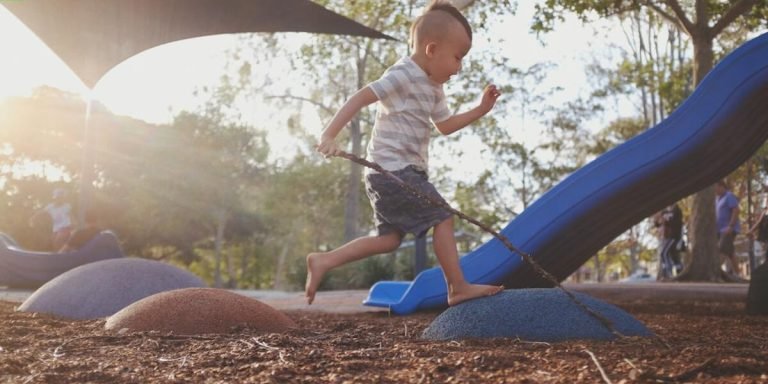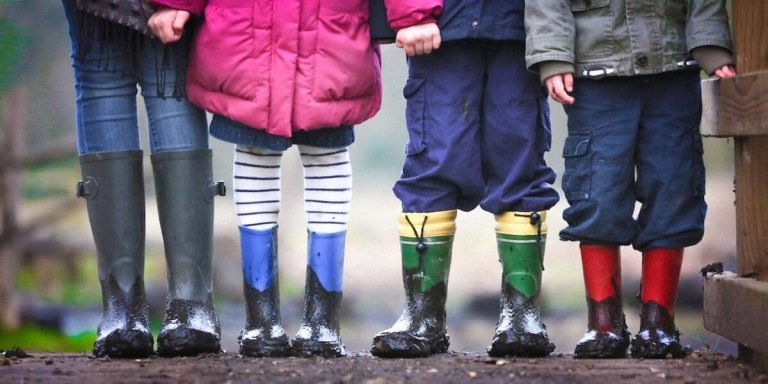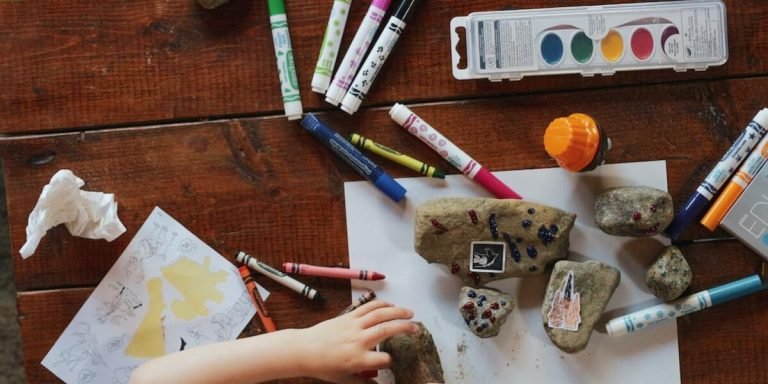Kinetic Learning: A Modern Approach to Early Childhood Education
Kinetic learning, an innovative approach to early childhood education, emphasizes on ‘learning by doing’. It is a dynamic and engaging pedagogical method that prioritizes action over rote memorization. Facilitating real-world experiences where children can touch, manipulate or move objects helps them form concrete perceptions of abstract principles.
In the realm of early childhood education, kinetic learning has proven itself as more than just another passing fad. Research indicates this activity-based learning technique plays a crucial role in cognitive development during tender years. Not only does it make the process fun-filled but also creates long-lasting impressions that improve retention power significantly among young learners.
Did you know?
“Kinetic learning or ‘learning by doing’ engages multiple senses and can improve a child’s memory retention up to 75%, as per the National Training Laboratories’ “Learning Pyramid”.
The Impact of Kinetic Learning on Student Engagement
As we delve into the era of digitalized education, kinetic learning emerges as a cornerstone in promoting student engagement. This method incorporates physical movement and activity-based learning to bolster comprehension and retention among young learners. With technology at its core, kinetic learning revolutionizes pedagogical approaches by merging energetic activities with key educational concepts.
Technology-integration amplifies this innovative methodology’s effectiveness as it promotes interactive electronic media usage that compliments bodily movements. Think about virtual reality games where students can explore ancient civilizations or dissect a virtual frogs; these tech-enabled environments are making subjects more relatable and exciting for our youngsters! By tapping into their natural inclination for playfulness, educators create stimulating lessons that spur both intellectual curiosity and physical vitality.
Moreover, Kinetic Learning capitalizes on students’ inherent craving for exploration whilst synergizing cognitive development. Children who engage through multi-sensory experiences – touch, sight, motion – tend to grasp abstract ideas better than using traditional sit-and-learn methods alone.
The advent of tablets integrated with animated problem-solving tasks or mobile applications encouraging outdoor explorations effectively blend enjoyment with education while catering to various learner styles.
Exploring How Movement Enhances Concentration and Retention
In the rapidly changing landscape of education, kinetic learning has emerged as an effective strategy that significantly impacts student engagement. Let’s dive into how it enhances concentration and retention among learners.
For instance, think about interactive smart boards replacing traditional blackboards. Imagine math problems coming alive with virtual manipulatives or science lessons involving real-time experiments through simulation software! All these experiences are driven by activity-based learning supported by cutting-edge tech tools which encourage students’ active participation promoting improved focus on lessons.
The application goes beyond mere screen interactions too – Augmented Reality (AR) is playing a pivotal role transforming classrooms into dynamic spaces where learned material literally leaps off the page increasing both interest and comprehension levels!
Moreover, research consistently shows that when children use their bodies in the process of learning—such as through action songs or dance—they demonstrate better memory recall compared to purely verbal teaching methods due to increased blood flow enhancing brain function thus aiding memorization processes.
Case Studies: Successful Kinetic Learning Strategies in the Classroom
“Case studies around the globe have shown how kinetic learning strategies can transform classroom environments, fostering active engagement among students. The integration of technology has brought a new edge to these dynamic teaching methods.
One such example is found in an urban middle school located in New England. A traditional classroom set-up was replaced by interactive digital boards and movable furniture that encouraged movement while learning. Students were not only allowed but also encouraged to move around during lessons, engaging with class materials through physical activities integrated into lesson plans—demonstrating the practical application of kinetics principles.
In another case study from Australia, educators introduced gamification into their classrooms using augmented reality (AR). Through AR games tailored for specific subjects like Biology or History, students could interact physically with virtual elements – embodying “kinetic learning”. This had proven successful as it resulted in increased attention spans and improved retention rates among learners who previously struggled acadically.
Moreover, Scandinavian countries are famous for successfully adopting activity-based teaching methodologies even before technological advancements made them popular elsewhere.
Education researchers believe that both examples illustrate why kinetic education is becoming more essential today than ever before: it helps accommodate different types styles; promotes social skills alongside cognitive ones; encourages creativity innovation because pupils actively called upon solve problems think critically about what they’re studying rather simply memorizing facts concepts verbatim.
Designing Effective Activity-Based Lessons for Diverse Classrooms
In our fast-paced, technologically advanced world of 2023, crafting engaging activity-based lessons that cater to diverse classrooms is more important than ever before. Comprehension comes easier when children can connect learning with action. When kinetic learning – the involvement of body movements in cognitive tasks – blends seamlessly with academics, it paves way for a complete and effective pedagogical approach.
Implementing technology into these activities further amplifies this educational method’s effectiveness by adding an element of dynamic interaction. In fact, current technologies such as augmented reality (AR), virtual reality (VR) or even robotics are now being used across different age groups to enhance activity-oriented learning experiences.
However, designing these interactive lesson plans requires meticulous strategic planning from educators who need to understand each student’s unique needs and abilities while keeping curriculum standards intact. The keyword here is customization; every student learns differently hence why incorporating various technological tools combined with physical activities helps foster a conducive environment where everyone feels comfortable participating.
Moreover, apart from just integrating tech-tools within classroom settings for enhanced visualizations or simulations during teaching process; they have another key role too- making education accessible! Now learners across the globe gain access quality resources online like never before— all thanks adoption digitalization in field teaching methods via internet connection –That way you won’t only accommodate differences but also promote inclusivity amongst students regardless their location around world simultaneously!
Tailoring Activities to Accommodate Multiple Learning Styles
Understanding the concept of multiple learning styles is crucial in tailoring activities that cater to a diverse classroom. In this era of kinetic learning, which emphasizes motion and activity as primary methods for comprehension, it’s important to consider how technology can be integrated into these teaching strategies.
Firstly, remember each child assimilates information differently. Some might thrive on visual aids while others require physical interaction with their lessons – hence the need for tailored educational experiences accommodating all these disparate needs effectively.
For instance, there are numerous tech tools available today that enable teachers to customize interactive lessons catering specifically to auditory learners who prosper from listening rather than seeing or doing. Podcasts episodes explaining complex concepts or audio readings could help them understand better and faster.
On the other hand, you’ve got your kinesthetic learners – children who learn best by ‘doing’. With advancements in virtual reality (VR) and augmented reality (AR), we now have incredible ways to engage such students actively in an immersive digital environment where they can interact physically with what they’re studying about; thus making abstract ideas more concrete through tactile stimulation.
Visual learners too aren’t left out from reaping benefits Of technology integration. PowerPoint presentations filled with infographics depicting various states of matter or online forums providing vivid images showcasing global cultural differences would resonate deeply within this group because it appeals directly towards their predominant way absorbing new knowledge: visually!
Incorporating Technology and Interactive Tools in Kinetic Lessons
Understanding how to incorporate technology and interactive tools into kinetic lessons is key in shaping the modern classroom. Kinetic learning, also known as movement-based or activity-based learning, has shown its effectiveness over traditional sitting-and-listening methods. It engages students physically which leads to increased mental attention.
In 2023, advances in ed-tech have introduced a wide variety of solutions that can be used for this purpose. Interactive whiteboards are one such tool that facilitates kinesthetic interaction with lesson material on a large scale. These devices transform ordinary chalkboard instructions into an exciting visual experience full of animations and hands-on participation opportunities.
Virtual Reality (VR) also plays a vital role within diverse classrooms by providing immersive environments where children can explore various concepts three-dimensionally while moving around freely – all without leaving their place! Moreover, Augmented Reality(AR) overlays digital information onto physical objects thereby blending real-world elements with computer-generated ones leading to instant enhancement of sensory perception about subject matters under study.
Portable smart gadgets like tablets loaded with educational applications offer myriad ways for facilitating group activities among pupils- from quizzes pitting teams against each other based on curriculum topics towards collaborative project work using cloud facilities together promoting shared responsibility along cooperation skills too!
Measuring Outcomes from Activity-Based Educational Approaches
In the ever-evolving sphere of childhood education, harnessing the potential of technology has become a critical part. This integration provides fertile ground for innovative pedagogies like kinetic learning. Kinetic or activity-based learning involves leveraging physical activities to facilitate comprehension and retention among young learners.
The advent of kinetically designed software programs is now offering bright prospects in making this approach widely accessible and efficient. These technological innovations are characterized by engaging platforms that incorporate virtual reality, interactive games, digital simulations – all geared towards amalgamating movement with cognitive processing.
A clear metric to measure outcomes from these activity-based approaches can significantly guide educators in refining their methods effectively when integrated into the classroom curriculums. As we immerse deeper into 2023 where data-driven decisions take precedence, quantitative means such as student performance tracking in terms of speed, accuracy and level progressions within these applications provide valuable insights on individual learner’s capabilities.
Additionally qualitative observations surrounding improved engagement levels, increased class participation – gauged through interaction metrics collected by advanced Learning Management Systems (LMS), offer crucial feedback about kinetic learning techniques’ effectiveness vis-a-vis traditional teaching styles.
As stakeholders continue fostering this symbiosis between technology and education; assessment models need more refinement considering factors beyond academic scores—like developing motor skills while strengthening problem-solving abilities—a multidimensional growth essential for real-world challenges ahead they will face as adults.
Evaluating Academic Performance Improvements Linked to Kinetic Activities
In the world of education, technology has ushered us into an era where kinetic learning – a pedagogical approach that emphasizes physical activity as both a process and outcome in learning – is increasingly gaining acceptance. Evaluating academic performance improvements linked to these kinetic activities is essential for understanding their potency.
Firstly, it’s important to discern what we mean by ‘kinetic activities’. These are dynamic tasks requiring movement from learners, whether it be hands-on experiments in science or role-playing exercises during language studies. Kinetic activities shift away from traditional lecture-driven approaches and promote active involvement within educational contexts.
The integration of such methods can lead to significant student gains acadically. For example, research reveals students involved in project-based work—which often involves real-world problem-solving and collaboration—regularly display improved subject knowledge compared with peers who engage only with passive instruction methodologies.
Another critical aspect when evaluating academic performance enhancements tied to kinetic learning relates directly towards cognitive development levels witnessed amongst individuals engaged through these means. Children seem more adept at grasping difficult concepts once they physically interact with them—the kinesthetic connection between body movements aids memory retention significantly compared alongside conventional approaches reliant solely upon auditory/visual inputs alone; thereby reinforcing overall comprehension abilities over time .
Moreover, benefits extend beyond mere academics: kids participating actively exhibit increased confidence levels borne out an enhanced grasp concerning subjects due largely because they’re encouraged explore ideas independently rather than rely purely instructions given teacher/faculty member – ultimately leading self-reliance & resilience formation essential life skill sets.
Assessing Behavioral and Social Development through Active Learning Methods
Activity-based learning (ABL), especially with the integration of technology, promotes a dynamic interaction between children and their environment. This pedagogical approach, often referred to as kinetic learning, encourages students to learn through physical activity rather than passive listening.
To assess behavioral developments in your young learners leveraging ABL approaches begins by observing behavior during activities. Technology-integrated education software can help record student’s behaviors as they engage with lessons in real-time – how do they interact? What decisions are made independently?
Also noteworthy is understanding the social impact of these active methods on our youngsters’ development. Kinetic learning enables greater collaboration opportunities among peers whilst using educational technologies such as virtual reality or game-based digital platforms for cooperative tasks.
Moreover, keep an eye out for enthusiasm levels! An increase shows that there’s been some level of internalization and personal relation formed with what’s being taught – perfect markers indicating behavioral growth via activity based learning techniques!
Lastly but importantly from an assessment perspective are problem-solving skills acquired over time. Look at how effectively students use tech tools like coding programs or robotics kits which promote logical thinking while keeping them physically engaged throughout the session.
Conclusion
In conclusion, kinetic learning harnesses the natural energy and enthusiasm of young children to create an engaging educational environment. It’s a vibrant approach that shakes off the cobwebs of traditional methods, allowing early learners to explore knowledge through movement and interaction. The result?
A more involved learner who associates education with excitement, creativity and discovery.
Remember – this is just one piece in the intricate jigsaw puzzle that forms our current understanding on child education methodologies. We invite you to take your time browsing other sections on our website for additional insights into educating youngsters effectively as well as support resources for parents and educators alike. Let’s revolutionize learning together by empowering children today with tools they’ll utilize tomorrow!







